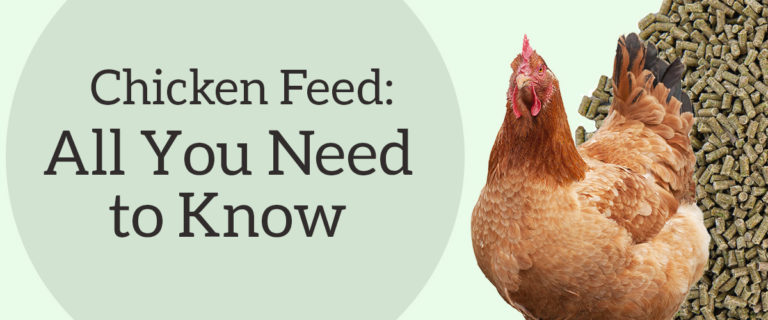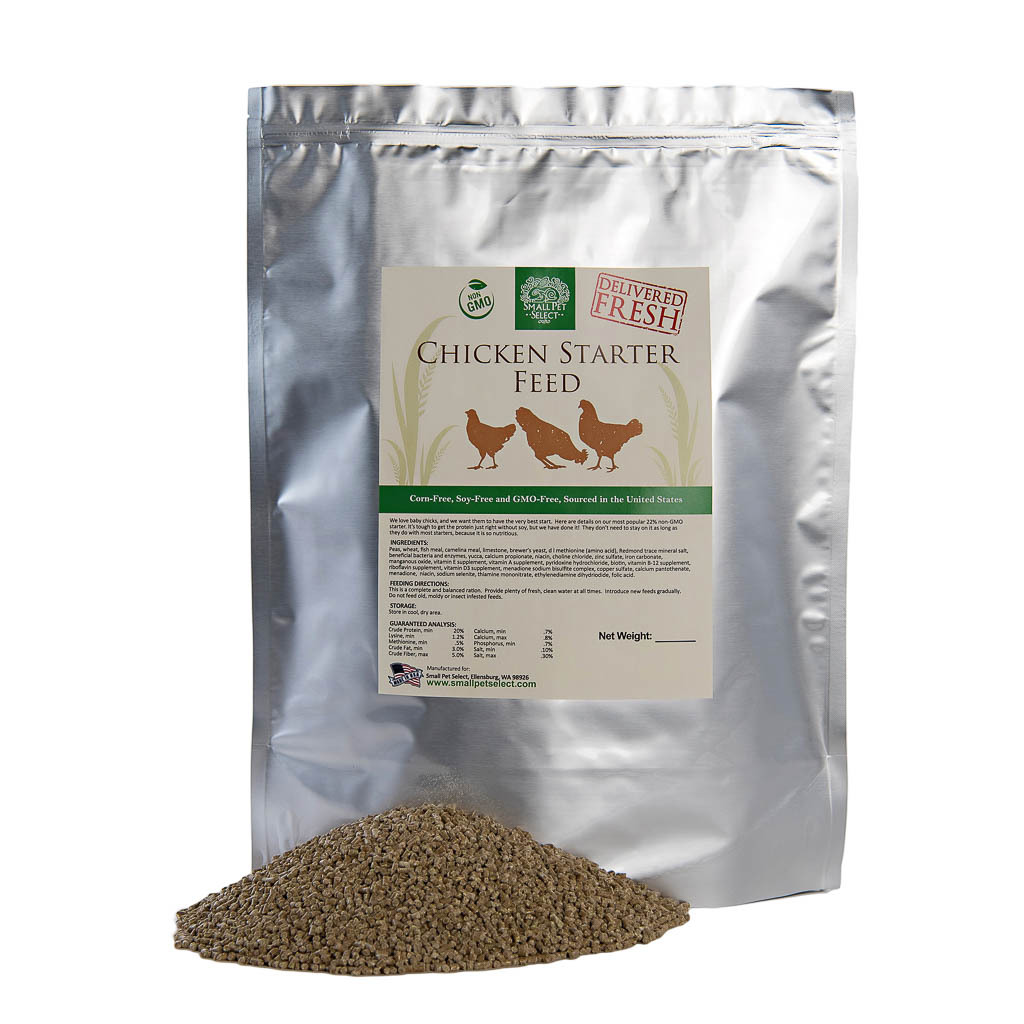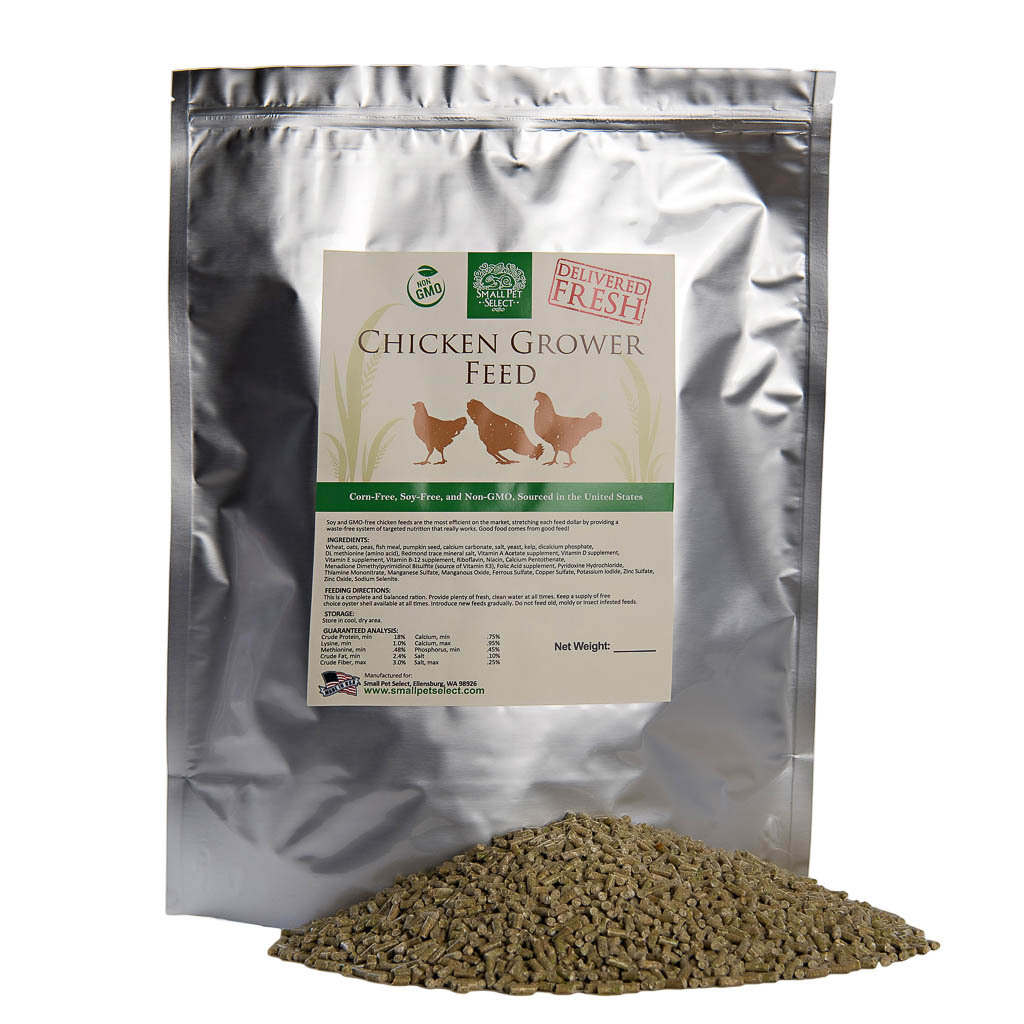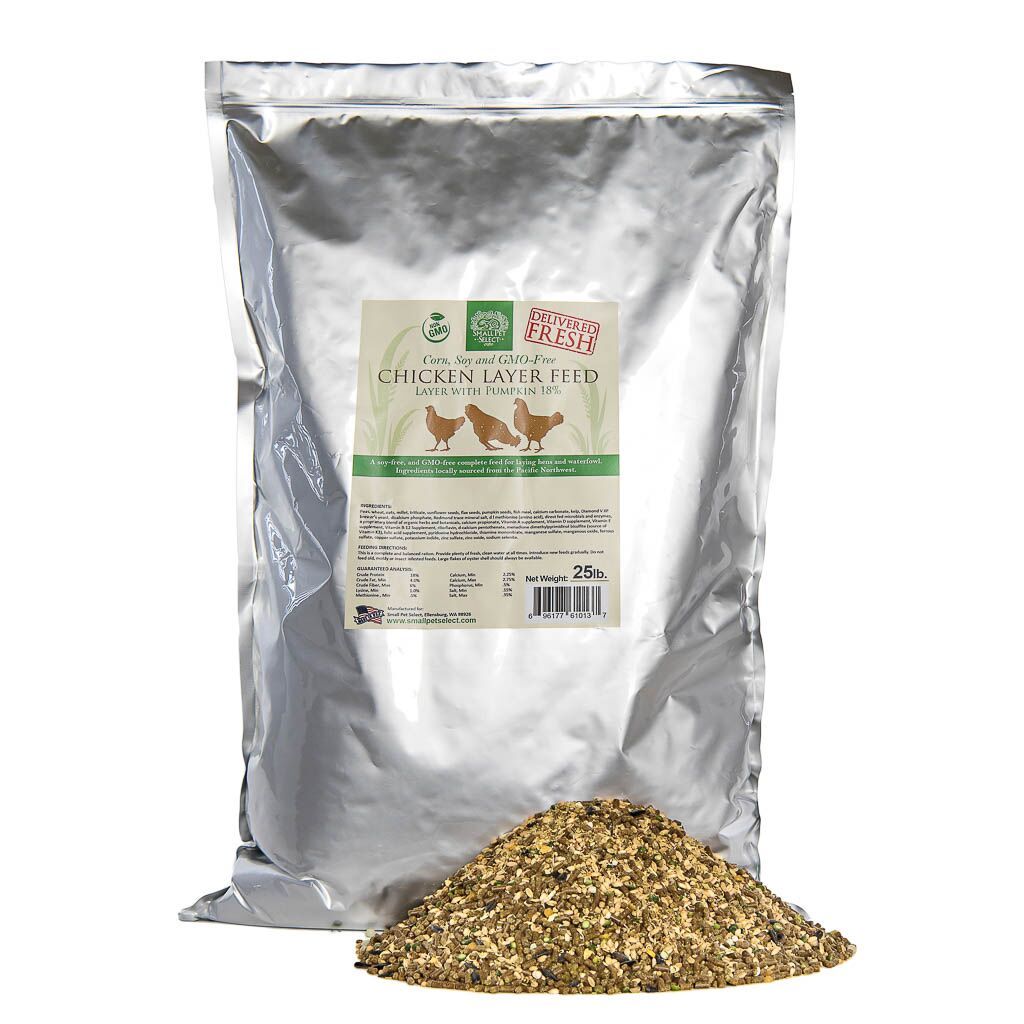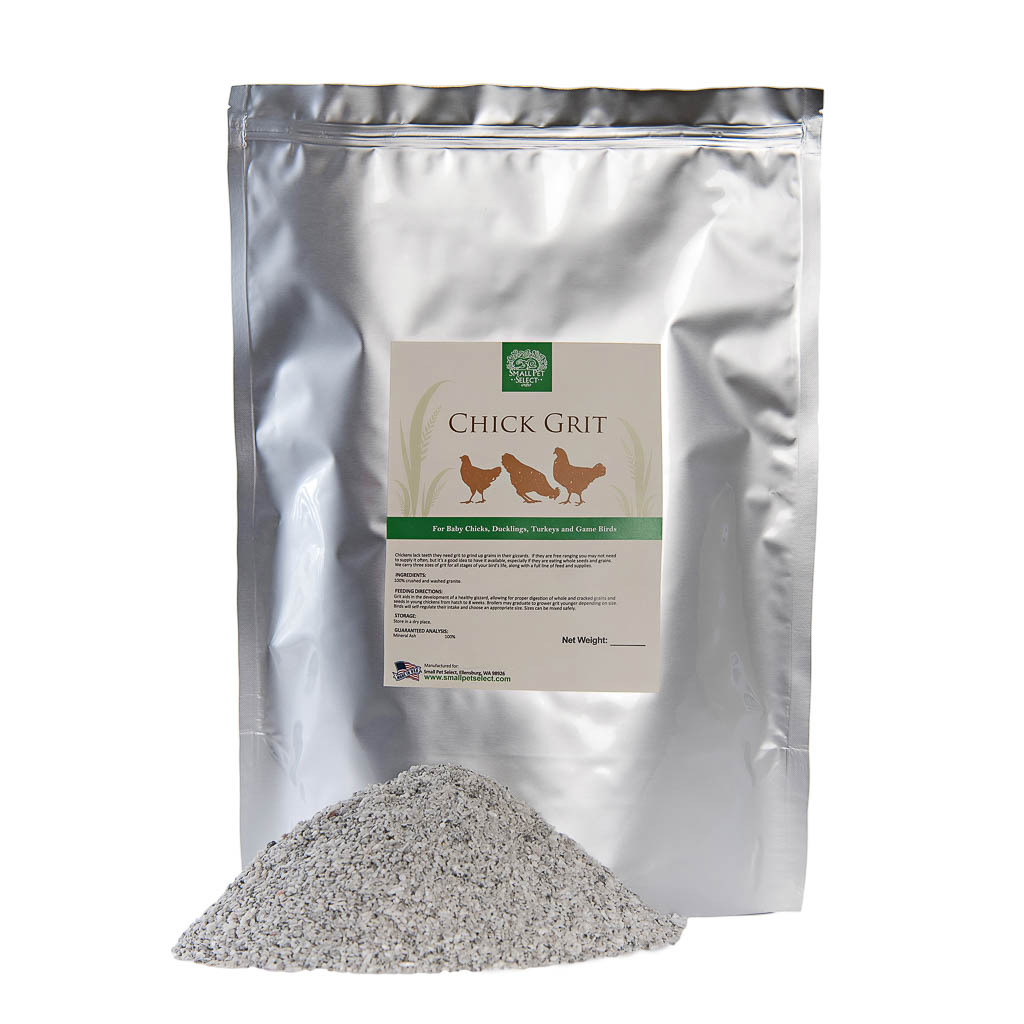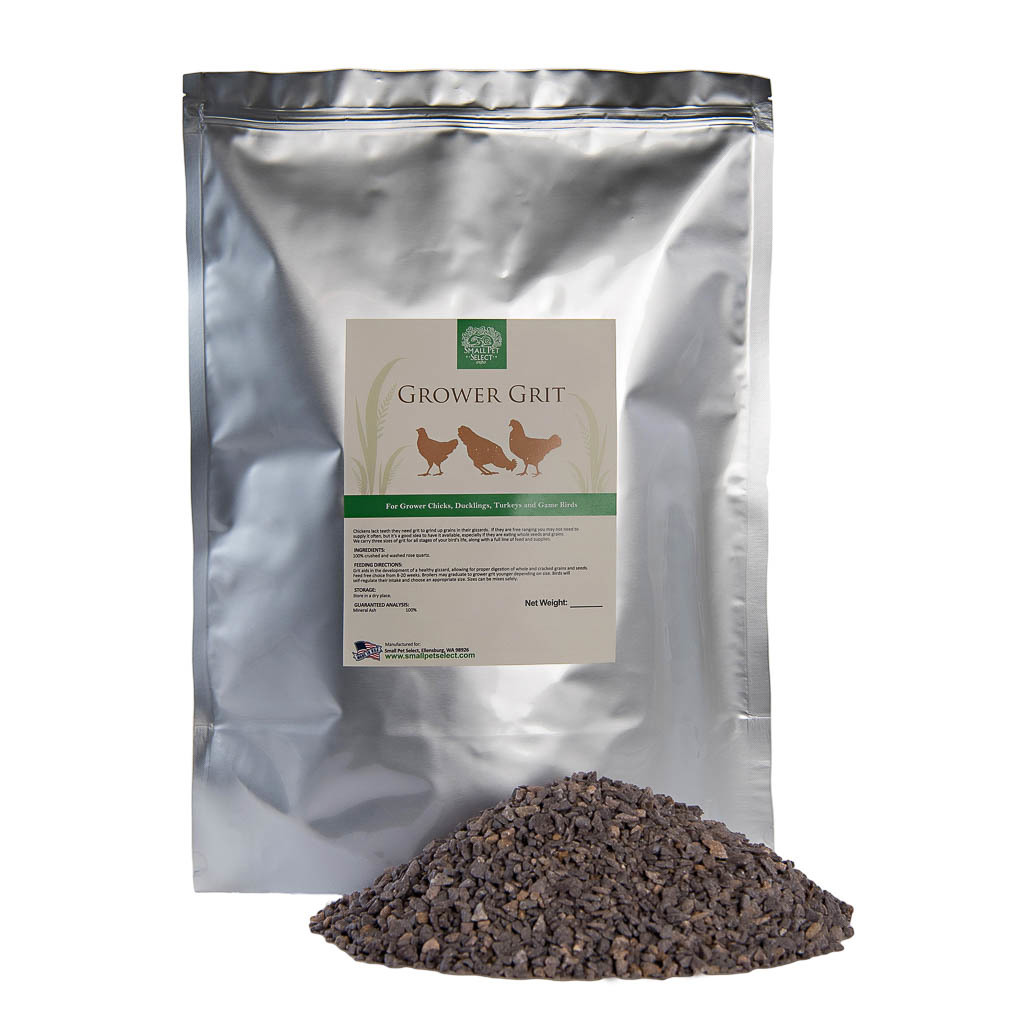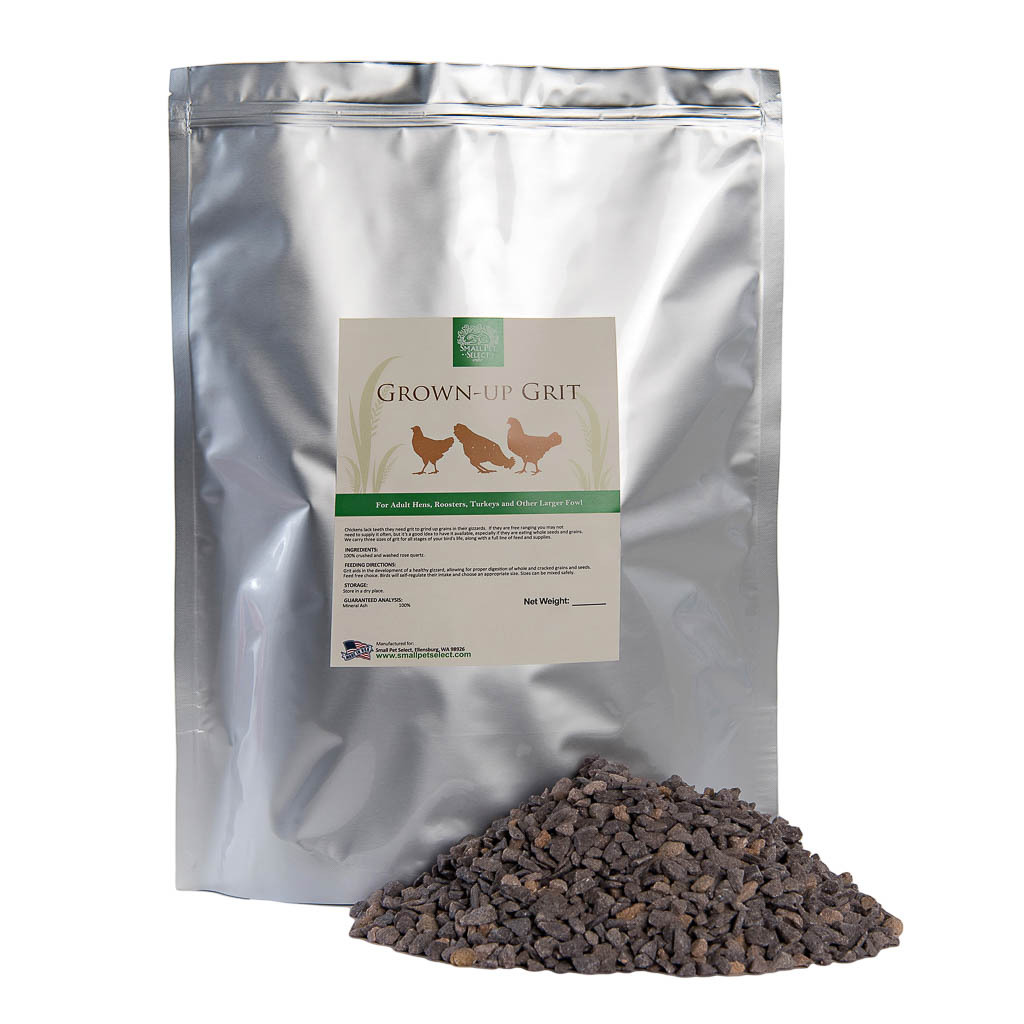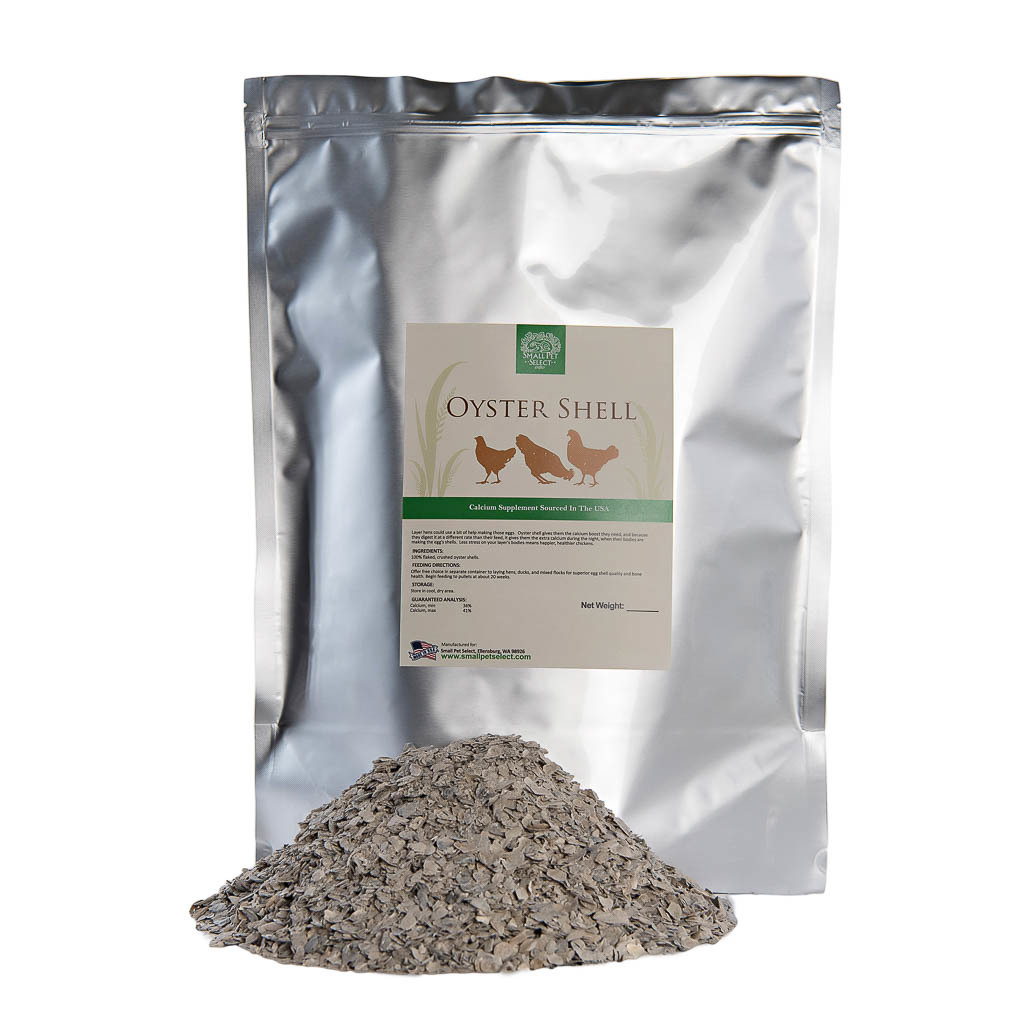We believe all animals need dedicated love and care. One of the best ways pawrents can show that is by providing the best quality food to keep your loved ones happy and healthy. The different types of chicken feed are confusing... we totally get it. But, knowledge is power. 💪🏼 In this article, we’ve got all you need to know about chicken feed.
A quick note before we dive into our chicken feed guide. All feed addressed in this article is for laying hens. Meat birds have different nutritional requirements.
Glossary
Describing the diverse types and uses of poultry feeds involves a variety of terms. We break them down for you here:







Types of Chicken Feed
Like most species, organic chicken feed and non-organic chicken feed are organized by age requirements. Small Pet Select is your one-stop-shop for chicken supplies online. Need feed? ⬇️⬇️⬇️
- Starter Feed: Used from hatch through 6-8 weeks and contains a high protein content (22% w/ no soy!) needed for rapid growth.
- Grower Feed: For adolescent/teenage peepers until they mature (16-18 weeks). It contains slightly less protein (18%) to prevent kidney problems.
- Layer Feed: Nutritionally balanced for adult chickens. (18% protein.)
Fermented Feed
You can use any non-organic/organic chicken food to make your own fermented feed. Fermented feed is recommended as the fermentation acts as a probiotic and releases the locked-in nutrients for your flock.
Four Forms of Feed (say that fast four times  )
)
- Crumbles: Crumbles are crushed pellets. Most chicken feed, including layer feed pellets, are available in crumble form. Suitable for chicks to eat.
- Pros: Readily available and keeps your flock occupied as they take longer to digest.
- Cons: Lots of waste, unless you use it to create mash.
- Mash: Mash is a mishmash of a combination of whole grains, vitamins, and minerals, served wet or dry. If it is served wet, it is combined with yogurt, applesauce, or warm water.
- Pros: Chickens can choose the parts they like to eat, nutritionally complete, and edible wet or dry.
- Cons: Not readily available; your flock may not eat the vitamins and minerals; it can grow mold if not devoured fast.
- Pellets: The most popular chicken feed, pellets are heated mash that is shaped into a tube and cut into small pieces.
- Pros: Nutritionally complete; less waste, comes in different sizes and varieties such as layer pellets, organic layer pellets, and egg layer pellets.
- Cons: Fast and easy to eat, therefore chickens may get bored and bully other flock members.
- Whole Grains: Also known as “scratch grains” or "scratch," non-organic and organic whole grains are a mixture of unprocessed grains. If you want to give your peepers a treat and help keep them warm in the winter, they'll love whole grains.
- Pros: Easy and tasty to eat.
- Cons: Not nutritionally complete.
Nutritional Requirements
As we mentioned in the last section, Chickens need vitamins and minerals, just like all other species of animals. Obviously, if they don't get a nutritionally complete diet, it can lead to serious health issues. A flock's nutritionally complete diet contains water, carbohydrates, fats, proteins, minerals, and vitamins. It can be found in non-organic and organic poultry feed.
- Water: Water is essential for life. Unlimited clean water needs to be available to your chickens. If you don't use automatic watering systems, be sure to fill their waterers twice a day. Also, the ratio of water to feed is 2:1.
- Carbohydrates: Carbs make up the second most important portion of your flock’s diet. Plus they provide energy. Whole grains such as corn, wheat, and barley provide carbs to chickens.
- Fat: Aside from providing power, it has three crucial roles in chicken diets. Fat is about 6% of a chicken's food. First of all, it makes food taste better. Second, it decreases the amount of dust in chicken feed. Finally, it's required for poultry to absorb fat-soluble vitamins (A, D, E, and K). Unfortunately, fats can also decrease chicken feed's shelf life. To offset the feed going bad, antioxidants, such as ethoxyquin, are added to chicken food.
- Proteins: Proteins convert into cells that create tissue in those cute, feathered bodies. While most feed list "crude protein," the quality of that protein is essential. Chickens are omnivores, so they don’t have to have a plant-based diet. The best types of protein for chickens are soybean meal, canola meal, corn gluten meal, meat meal, and bone meal. Fishmeal is also useable in minimal quantities as poultry don’t like an overly fishy flavor in their food.
- Minerals: Whole grains have low mineral content, so mineral supplements are added to feed to make them nutritionally complete. The minerals chickens need are calcium, chlorine, copper, iodine, iron, magnesium, manganese, phosphorus, potassium, selenium, sodium, and zinc.
- Vitamins: Chickens need fewer vitamins than other species and they can be partially supplied by feed. Flock parents can purchase a vitamin premix that provides: A, B (B12, biotin, folacin, niacin, pantothenic acid, pyridoxine, riboflavin, and thiamin), C, D, E, and K. Did you know poultry make their own vitamin C? Under normal conditions, they don’t need a vitamin C supplement, but it’s helpful if they are stressed.
Supplements
In addition to treats, you should also supplement your peepers with grit and oyster shell.
- Grit: Unlimited grit is necessary for chicks and chickens to be able to process food other than feed as they don’t have teeth. (If you're not such which you need, check out our guide.)
- Oyster Shell: Hens go through a pretty amazing process building those eggs, and oyster shell helps out at a particular point. The shells are made last, usually overnight, and the process can drain your chicken of calcium. The calcium in oyster shell is digested at a different rate than that found in their feed, so they have some extra during those night hours when they are creating shell. Help them out by providing oyster shell at all times, and they will self-regulate, eating it when they need it.
How Much Feed Does My Flock Require?
Much like the author, chickens like to eat several times a day. 🤷♀️On average, she needs 1/4 - 1/3 pound of feed daily.
Wow, that was a lot of information! We bet you didn’t know feeding poultry was so complicated, but now you have all you need to know about chicken feed.



